Sujino Co., Ltd.
Established 1953
▼
About Us
- Company Name
- Sujino Co., Ltd. (formerly known as Sujino Shoten Co., Ltd.)
- Founded
- 1953
- Established
- 1959
- Initial Capital
- ¥3,000,000
- Representative Director
- Osamu Sujino
- Employees
- 13
- Address
- 1327-3 Fukawa Kawagoe Saitama 350-0831 Japan
- Telephone Number
- 049-224-5371
- Fax Number
- 049-223-8737
- Bank
- Musashino Bank/Kawagoe Branch
Company History
| 1953 | Management of mustard powder company starts. Also processed and sold horseradish. |
| 1959 Aug 1st | Established Sujino Shoten Co., Ltd. |
| 1986 | Acquired land to build company. |
| 1956 Dec | Set up new factory. Main company & factory was moved there. Introduced automatic manufacturing into oil extraction factory. |
| 1992 | Introduced automatic powder system to mustard, wasabi and pepper manufacturing. |
| 2000 | Acquired adjacent land. |
| 2001 | Introduced powder dryer system. Established Mustard powder system. |
| 2005 | Gained ISO9001 certification. |
| 2006 | Introduced instant stew manufacturing system. |
| 2009 | Introduced instant curry manufacturing system. |
| 2017 | Company name changed to Sujino Co., Ltd. Started Sujino Shoten webshop. |
| 2020 | Gained ISO22000 certification. |
Our Products
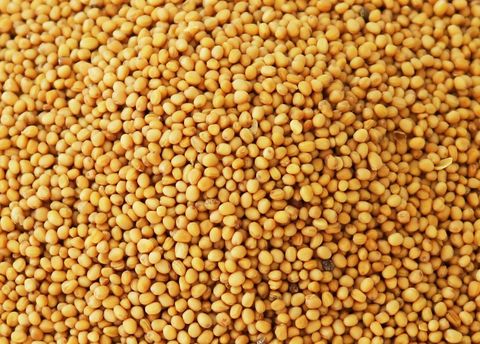
Mustard Seed
North American No.1 grade oriental mustard seeds grown in Canada, carefully selected by our company.

Oriental Mustard Cake
North American No.1 grade oriental mustard grown in Canada. Crushed into powder from delipidated mustard cake.
Contains oriental mustard seed powder with husk.
Image: Before crushing.
Contains oriental mustard seed powder with husk.
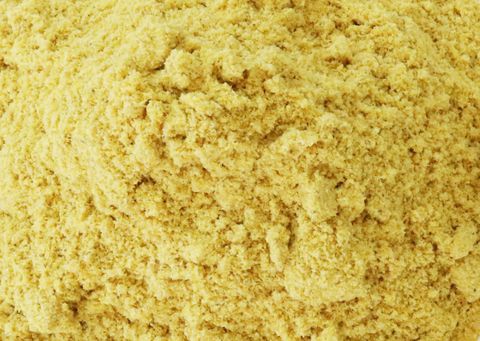
Japanese Mustard (Wakarashi)
North American No.1 grade oriental mustard seed grown in Canada. Crushed into powder from delipidated mustard cake.
Compared to products with fat content intact, the activated enzymes produces a sharp and straight spicy taste without the bitterness.
Compared to products with fat content intact, the activated enzymes produces a sharp and straight spicy taste without the bitterness.
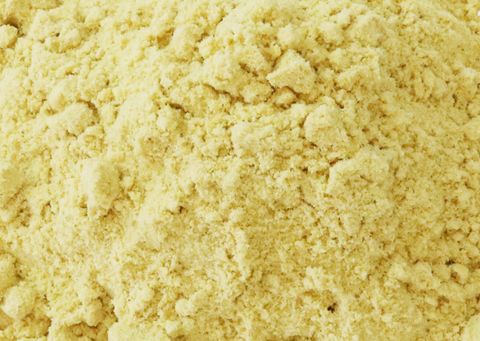
Plain Mustard
North American No.1 grade oriental mustard seed. Crushed into powder from delipidated mustard cake with husk removed.
Without the husk, it gives off a brighter yellow colour. The activated enzymes produces a sharp and straight spicy taste without the bitterness.
Without the husk, it gives off a brighter yellow colour. The activated enzymes produces a sharp and straight spicy taste without the bitterness.
Spice Trivia
What is spice?
Spices are mainly dried parts of plants like seeds, leaves, stems, skin, flower, root and etc. that are used for adding fragrance, spiciness and color to dishes. Herbs are spices that are often used raw, commonly leaves and stems. With the exception of poisonous plants and those with specific uses (such as for tea), they may be regarded as spices.
Forms of Spice
| Form | Merits | Demerits |
|---|---|---|
| Whole | Doesn't lose scent easily. Longer expiry date than powdered. Strong fragrance when crushed with a mill. Can be used for cooking at high temperature. Easy to remove from cooking. | Difficult to use. Requires tools. |
| Powdered | Can be used immediately. Easy to measure. Easy to mix. | Changes scent and colour easily. Weak to high temperature. |
Roles of Spice
(Cinnamon, rosemary, cumin, vanilla beans, etc.)
To remove odors from meat, fish and etc.
(Pepper, bay leaf, nutmeg, clove, sage, thyme, etc.)
(Capsicum, pepper, wasabi, ginger, etc.)
(Turmeric, saffron, paprika, etc.)
(Clove, turmeric, fennel, nutmeg, etc.)
Tips for Using Spice
After using, close the container lid.
For spices you are not familiar with, it is best to add a little at a time.
It is also to protect the spice in the container from heat and moisture from cooking.
Whole Type Spice
Herbs
Stirring at low heat, fragrance from the spice will be imbued into the oil.
Although the fragrance of fresh parsley is superior, it is difficult to keep. Due to that, dried parsley which can be kept in the refrigerator is very convenient.
When substituting dried for fresh, use one-third the amount.
Mixing Spices
Types of Spice
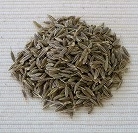
Cumin
Parsley family, annual plant. Seed.
"The aroma of curry". The main ingredient of curry. A fundamental spice for ethnic cuisine. It goes well with meat and is used in sausages and meatloaf, and also with carrots. Recommended in carrot kinpira (cooked with soy sauce and sugar).
"The aroma of curry". The main ingredient of curry. A fundamental spice for ethnic cuisine. It goes well with meat and is used in sausages and meatloaf, and also with carrots. Recommended in carrot kinpira (cooked with soy sauce and sugar).
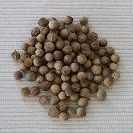
Coriander
Parsley family, annual plant. Seed.
Chinese parsley seeds. Coriander is easy to use as it has a light scent. A main ingredient of curry. Goes well with minced meat dishes, sausages, pickles and sweets. Used for cookies and baked apples. Bring out the sweet and distinct flavour of apples and pears by sprinkling them with coriander powder.
Chinese parsley seeds. Coriander is easy to use as it has a light scent. A main ingredient of curry. Goes well with minced meat dishes, sausages, pickles and sweets. Used for cookies and baked apples. Bring out the sweet and distinct flavour of apples and pears by sprinkling them with coriander powder.
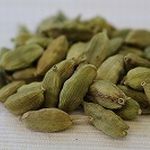
Cardamon
Ginger family, perennial plant. Fruit.
A refreshing fragrance. The most expensive spice after saffron and vanilla. For curry and minced meat dishes, also recommended for sweets. Cardamon coffee is a common drink in Saudi Arabia and the Middle East. Be careful not to overuse as it has a strong scent.
A refreshing fragrance. The most expensive spice after saffron and vanilla. For curry and minced meat dishes, also recommended for sweets. Cardamon coffee is a common drink in Saudi Arabia and the Middle East. Be careful not to overuse as it has a strong scent.
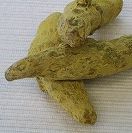
Turmeric
Ginger family, perennial plant. Rhizome.
"The colour of curry". Has a unique scent and slightly bitter flavour. Used for its yellow colour. The ingredient curcumin is oil soluble and will impart a beautiful colour when cooking oil. Saffron is also yellow but its pigment (crocin) is water soluble.
"The colour of curry". Has a unique scent and slightly bitter flavour. Used for its yellow colour. The ingredient curcumin is oil soluble and will impart a beautiful colour when cooking oil. Saffron is also yellow but its pigment (crocin) is water soluble.
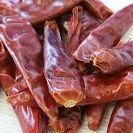
Red Pepper
Eggplant family, perennial plant. Spicy fruit.
Brought back to Europe after the discovery of America by Columbus and spread throughout the world in the span of a century. It is spicier in a powdered form than as a whole fruit. The fruit contents are especially hot.
Brought back to Europe after the discovery of America by Columbus and spread throughout the world in the span of a century. It is spicier in a powdered form than as a whole fruit. The fruit contents are especially hot.
Mustard Trivia
3 Types of Karashi (Mustard)
| Scientific Name | Brassica juncea | Brassica nigra | Sinapis alba |
|---|---|---|---|
| Japanese Name | Wagarashi | Kurokarashi | Shirokarashi |
| English Name | Oriental mustard | Black mustard | Yellow mustard |
| Seed Colour | Yellow | Black/Blackish-brown | Pale yellow |
| Seed Size | Round, ~1mm | Round, ~1mm | Round, ~2mm |
| Key Compound | Allyl | Allyl | Benzyl |
| Features | Strong intensity, pungent | Strong intensity, pungent | Weak intensity, mild |
Karashi (Mustard) ? Nutrition and Effects of Mustard
| Mineral | Content |
| Vitamin B1 | 0.73mg |
| Vitamin B2 | 0.26mg |
| Niacin(B3) | 8.5mg |
| Calcium | 250mg |
| Phosphorus | 1000mg |
| Iron | 11.1mg |
| Magnesium | 380mg |
| Manganese | 1.76mg |
| Potassium | 890mg |
※Nutritional values per 100g (mustard powder)
From the Standard Tables of Food Composition in Japan, 5th ed.
From the Standard Tables of Food Composition in Japan, 5th ed.
Karashi (mustard) - is a spice made from the seeds of the Brassica genus of plants. Said to originate from Central Asia, it is one of the essential condiments that add flavour to cooking. There are several types, like yellow, oriental, brown, etc.
● Wagarashi (Japanese mustard) is made by mixing powdered karashi (oriental mustard) with water.
● Plain mustard is made by mixing water, vinegar, sugar, flour, etc. to mustard powder (oriental, yellow, brown, etc.) to reduce the pungency and give it a sweet and sour taste.
● Wagarashi (Japanese mustard) is made by mixing powdered karashi (oriental mustard) with water.
● Plain mustard is made by mixing water, vinegar, sugar, flour, etc. to mustard powder (oriental, yellow, brown, etc.) to reduce the pungency and give it a sweet and sour taste.